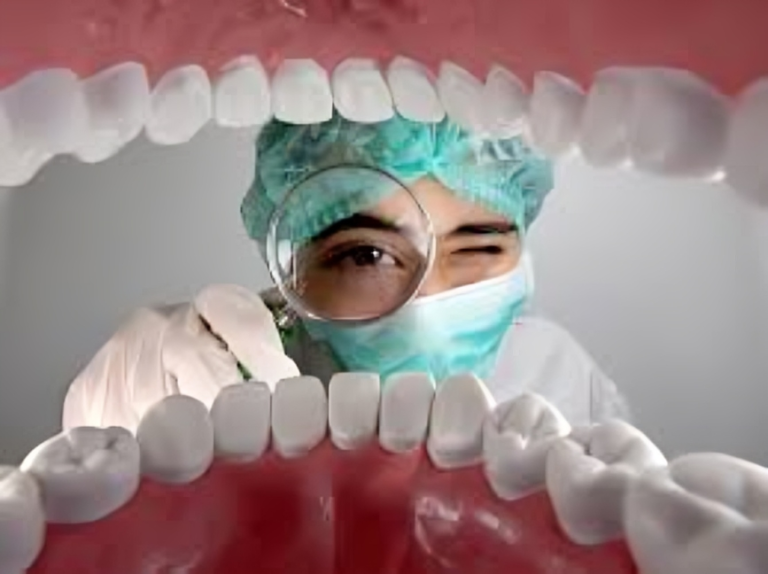Innovations In Dental Technology: Advancements In Laminates And Veneers
The field of dentistry has witnessed remarkable technological advancements, and nowhere is this more evident than in the realm of aesthetic dentistry. Laminates and veneers, once primarily associated with cosmetic enhancements, have benefited significantly from innovative dental technologies. This article explores the latest advancements in dental technology concerning laminates and veneers, highlighting how these innovations are shaping the landscape of cosmetic dentistry and providing patients with more effective and personalized treatment options.
Digital Impressions and 3D Scanning: Precision in Design
Traditional dental impressions involve the use of putty-like materials that could be uncomfortable for patients. The advent of digital impressions and 3D scanning has revolutionized the process. Dentists now use intraoral scanners to capture detailed, high-resolution images of the patient’s teeth, allowing for precise measurements and a more accurate fit of laminates and veneers. This technology not only enhances the patient experience but also contributes to the creation of highly customized restorations.
Computer-Aided Design and Manufacturing (CAD/CAM): Tailored Precision
CAD/CAM technology has significantly streamlined the design and manufacturing process for laminates and veneers. Dentists can digitally design restorations based on the patient’s unique oral anatomy, and this data is then sent to a milling machine that crafts the final restoration from high-quality materials. The result is a precisely fitted and aesthetically pleasing laminate or veneer, reducing the margin for error and improving overall treatment outcomes.
Augmented Reality (AR) in Smile Design: Visualizing the Outcome
Augmented Reality has found its way into the field of cosmetic dentistry, offering patients the opportunity to preview their potential smile enhancements before the actual procedure. Through AR applications, dentists can superimpose digital images of proposed laminates or veneers onto a patient’s existing teeth, allowing for a realistic visualization of the final outcome. This not only helps in setting realistic expectations but also enables collaborative decision-making between the dentist and the patient.
3D Printing Technology: Personalized Restorations
The use of 3D printing technology has brought a new level of personalization to the creation of laminates and veneers. Dentists can now print highly detailed and customized restorations layer by layer, ensuring a precise fit and natural appearance. This technology is particularly beneficial for patients with unique dental anatomy or those seeking highly individualized aesthetic enhancements.
Smart Materials for Enhanced Durability: Longevity in Aesthetics
Innovations in dental materials contribute significantly to the durability and longevity of laminates and veneers. Smart materials with enhanced strength, resilience, and natural translucency mimic the properties of natural teeth more closely. These advanced materials ensure that the restorations not only look aesthetically pleasing but also withstand the daily wear and tear associated with normal oral function.
Teledentistry for Remote Consultations: Convenience in Treatment Planning
Teledentistry has gained prominence, allowing patients to consult with their dentists remotely. In the context of laminates and veneers, teledentistry facilitates initial consultations, treatment planning discussions, and follow-ups without the need for frequent in-person visits. Patients can discuss their aesthetic goals, receive recommendations, and make informed decisions about their smile enhancements from the comfort of their homes.
Biocompatible Materials: Prioritizing Oral Health
Advancements in dental technology also focus on the use of biocompatible materials for laminates and veneers. Biocompatibility ensures that the restorations are well-tolerated by the oral tissues, reducing the risk of allergic reactions or adverse effects. This emphasis on oral health, in addition to aesthetics, reflects a holistic approach to cosmetic dentistry.
Artificial Intelligence (AI) in Treatment Planning: Data-Driven Precision
AI is increasingly being integrated into the treatment planning process for laminates and veneers. By analyzing vast datasets of patient cases, AI algorithms can provide valuable insights into the most effective treatment options, predict potential outcomes, and assist dentists in creating personalized treatment plans. This data-driven approach enhances precision and contributes to more successful aesthetic outcomes.
Minimally Invasive Techniques: Preserving Tooth Structure
Technological advancements in dental equipment and techniques now allow for minimally invasive procedures when applying laminates and veneers. Laser technology, for example, enables precise enamel preparation, minimizing the removal of healthy tooth structure. This approach preserves the natural integrity of the teeth while still achieving significant aesthetic improvements.
Remote Monitoring and Maintenance Apps: Post-Treatment Care
Post-treatment care is as crucial as the initial procedure, and dental technology has extended into this phase as well. Apps and monitoring devices allow patients to receive guidance on oral hygiene practices, track the condition of their laminates and veneers, and receive alerts for follow-up appointments. This remote monitoring ensures the longevity of the restorations and supports ongoing oral health.
Conclusion
Innovations in dental technology have transformed the landscape of cosmetic dentistry, particularly in the realm of laminates and veneers. These advancements not only enhance the precision and effectiveness of the procedures but also contribute to a more patient-centric approach, allowing individuals to actively participate in the treatment planning process. As technology continues to evolve, the future holds even more promising developments, ensuring that individuals seeking aesthetic enhancements through laminates and veneers will benefit from state-of-the-art, personalized, and minimally invasive solutions.







